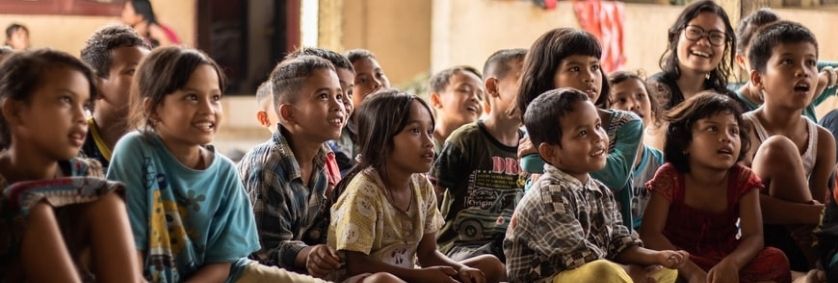Our Blog

28Dec 2021
How Did the Rural Indian Students Take Education During COVID19 Caused Lockdown?
Similar to the urban schools, the rural schools had to give in to the claws of COVID19 led lockdown since March 2020, and the children are away from the formal period for a long. E-education, usually brought up India's digital divide, and it showed just 24% of households are having Internet access.
The students enrolled in the Government schools of Rural India were particularly affected since they were unable to receive the education materials during the pandemic driven times.
In such disastrous events, the NGOs have started taking initiatives to influence the households and the students to continue with their education. As a result, rural education could be continued for the village children in India, despite they did not attend schools.
Access to Digital Learning
There could never be a lack of study materials when digital education is open for all. Both the children and their interested parents were given online classes at their centres for them to be aware of facts out of their syllabus. Moreover, learning from YouTube videos by listening to the lectures gave them a fresh impetus to explore something new. In this way, they could memorize the lessons better and take down notes with ease.
Providing Relevant Tools To Foster A Change in Rural Education
The NGO members authenticated the Government's holistic educational programs, which include DIKSHA and SWAYAM enhancing educational opportunities for the rural children by means of digital learning tools and updated content.
Special focus was given to providing vital infrastructure enabling continual education for the members, through refined and impactful programmes and policies.
Thanks to the collective efforts of the Government and NGO staff, a positive impact could be created for the rural community. They are aiming at doing away with the imbalances in rural education by improving the school infrastructure, offering career counselling, and mobilizing quality teachers.
Education for All
Interacting with the school teachers, parents, and students – the NGO staff could understand how will appropriate infrastructure propel education. Likewise, they did implement the improvement projects for transforming the schools so they meet the basic infrastructure needs like clean learning centres, safe drinking water, sanitation facilities and the like. In this way, mass-scale learning is being encouraged among the rural population.
Teamwork Under Supervision
At the learning centres, the mentors guided the students towards holistic growth, so they could learn the cognitive skills. Teamwork was shaped as the main theme, with supervision, so everyone inculcates healthy practices and sanitation measures.
Quality education had been the chief focus for the NGO undertaken programmes, and learning with discussions and interactions gave further motivation to the students. They started taking active participation, and while doing it themselves, they even encouraged their elders towards following a reformed and inclusive education system.
Sustainable Education System
Although the NGO staff had faced diverse challenges while ensuring education for all yet they did successfully implement solutions for a sustainable education system in rural India. The right infrastructure is the gateway to achieving the right education to be imparted to everyone concerned.
With the efforts and skills being rightly put, the NGO staff have successfully convinced most corporate firms to tie up to Corporate Social Responsibility, and support the NGO run schools in the rural areas by setting up smart learning facilities and better infrastructure. As a result, the students did not want to distance themselves from learning. Holistic educational growth, in turn, provided the needed social and economic progress as rural India needs for growth in the global arena.
SHARE THIS
0 Comment(s)
Leave a Comment
Latest Articles
-
How NGOs Help Elevate The Condition Of PWDs?
18th Mar, 2024 -
The Role Of Community-Based Rehabilitation Program......
08th Mar, 2024 -
How NGOs For Disabilities In India Champions For I......
16th Feb, 2024 -
The Role Of NGOs In Development Of Children With D......
05th Feb, 2024 -
How The Changing Rural Education System Is Shaping......
12th Jan, 2024






